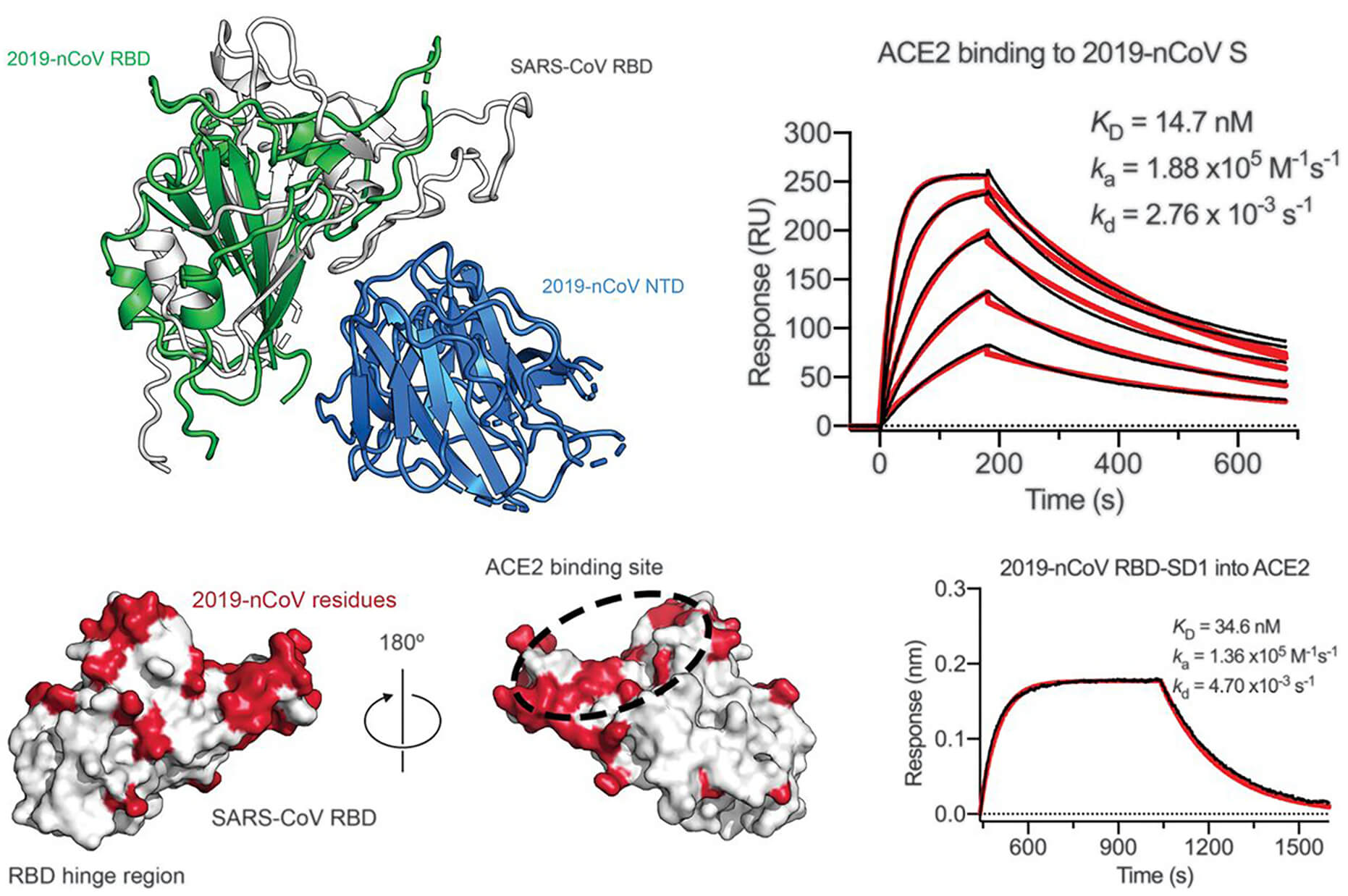Protein Interaction Analysis Services for Coronavirus Research
Protein-protein interactions (PPIs) are established when two or more proteins physically contact with each other. This phenomenon leads to specific biochemical events, such as molecular transport, signal transduction, and various metabolic pathways. In the process of virus infection of host cells, studying the interaction between virus proteins and host receptors is an important part of studying the mechanism of virus infection. Backed by high-throughput screening and affinity ranking techniques and powerful equipment, Creative Biostructure can meet your needs for research on the protein interactions involved in coronavirus infections.
Brief Introduction to Coronavirus and SARS-CoV-2
Novel coronavirus (SARS-CoV-2, formerly 2019-nCoV) belongs to the subgenus Sarbecovirus (Beta-CoV lineage B), and it becomes the seventh member of the coronavirus that can infect humans. For a virus to enter a cell, it must have its corresponding receptor on the host cell. Severe acute respiratory syndrome coronavirus (SARS-CoV) and Middle East respiratory syndrome coronavirus (MERS-CoV) infect human respiratory epithelial cells by the interaction of the virus spike (S) protein with human angiotensin converting enzyme II (ACE2) or dipeptidyl peptidase IV (DPP4), respectively. Due to the high similarity of the amino acid sequence and predicted protein structure between receptor binding domains (RBD) of novel coronavirus and SARS-CoV, the novel coronavirus can effectively utilize ACE2 as a cell invasion receptor, which may promote human-to-human transmission.
 Figure 1. Biophysical assays show 2019-nCoV S binds ACE2 with high-affinity via the 2019-nCoV RBD-SD1. (Adapted from Wrapp D.; et al. 2020)
Figure 1. Biophysical assays show 2019-nCoV S binds ACE2 with high-affinity via the 2019-nCoV RBD-SD1. (Adapted from Wrapp D.; et al. 2020)
Protein Interaction Analysis Services at Creative Biostructure
Various experimental methods have been used to study PPI, such as co-immunoprecipitation (co-IP), pull-down assay, yeast two-hybrid screening, phage display, and so on. Each method has its advantages and disadvantages in terms of specificity and sensitivity. Creative Biostructure has established a series of assays in the laboratory to help you perform protein interaction studies involved in coronavirus infection. We are better at analytical methods for biophysical characterization of biomolecules, e.g. affinity measurement and kinetics measurement. The following services are provided by us, including but not limited to:
- Surface Plasmon Resonance (SPR) for Coronavirus Research
- A thermal denaturation-based technique for measuring binding affinity
- Only requiring small quantities of samples and good correlations with ITC
- Bio-layer Interferometry (BLI) Technology for Coronavirus Research
- Based on the principle of optical interferometry
- Real-time monitoring
- Isothermal Titration Calorimetry (ITC) for Coronavirus Research
- A thermal denaturation-based technique and good correlations with SPR
- Detecting comprehensive thermodynamic parameters including enthalpy, stoichiometry and affinity
- Fluorescence Resonance Energy Transfer (FRET) Assay for Coronavirus Research
- A method based on distance-dependent interactions between fluorescent donor-acceptor pairs
- Spatial distribution and oligomerization analysis
- Saturation Transfer Differences (STD) NMR for Coronavirus Research
- Detecting values such as KD, the association and dissociation kinetics
- Label-free and only requiring small quantities of samples
- Microscale thermophoresis (MST) for Coronavirus Research
- A thermal denaturation-based technique and highly sensitive
- Label-free and Immobilization-free
Advantages of Our Services
Creative Biostructure has organized a team of scientists with rich experience in PPI analysis to provide you with one-stop services from experiment design to data analysis. We guarantee:
- High-quality services backed by state-of-the-art facilities
- Customizable services and good customer experience
- Competitive price on the market
- Fast response and efficient communication
- Our customer service representatives are available 24 hours a day from Monday to Sunday
Contact us to discuss your project!
Reference
- Wrapp D.; et al. Cryo-EM structure of the 2019-nCoV spike in the prefusion conformation. Science. 2020, 367(6483): 1260-1263.

 Figure 1. Biophysical assays show 2019-nCoV S binds ACE2 with high-affinity via the 2019-nCoV RBD-SD1. (Adapted from Wrapp D.; et al. 2020)
Figure 1. Biophysical assays show 2019-nCoV S binds ACE2 with high-affinity via the 2019-nCoV RBD-SD1. (Adapted from Wrapp D.; et al. 2020)